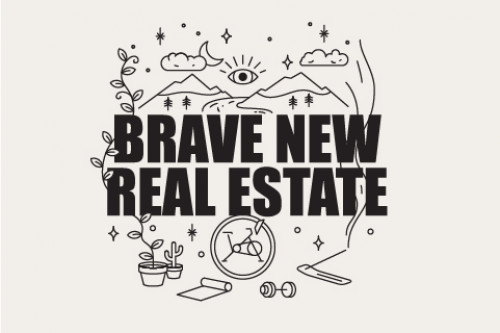Democratizing Development With Drew Lang
This episode features an interview with the architect Drew Lang about his 26-home development, Hudson Woods. Lang offers a model for a new style of development, one that puts a premium on sustainability and natural living at a time when many homebuyers are looking for communities outside the urban center. Lang discusses what it is that made Hudson Woods so successful—and what that success might mean for future rural residential developments.
With its ethos of sustainability and unique focus on branding, Hudson Woods has forged a path for a new kind of developer. We speak with Lang about the origins of this project, the market’s push towards nature, and what the next three years could look like in a post-pandemic market.
[9:20] On vernacular design:
“We very much wanted to bring something new, something fresh, something modern to the work we were doing, and always want to do that. At the same time, we felt the need to embrace this place and bring this architecture that we were about to build to a place that was very familiar and very accessible to people broadly speaking. … For us, the clear place to go was the local vernacular, the farm buildings, the barns, the sheds. … It was a matter of taking that and detailing around it, inserting all that glass to create a sense of modernity and openness to nature and differentiation from the historic buildings.”
[23:18] On branding:
“When marketing takes on storytelling, in a genuine sense, when the people telling the stories are involved in and genuinely interested in the story that they’re a part of, and they’re inviting other people to come on the journey with them, that’s when it can work really well. … When it’s just about making a sale, people feel that—the consumer public feels that. It doesn’t feel good. And naturally, in those cases, people have a hard time selling.”
[26:10] On anti-development model:
“I think when some profit is given up, that’s when the anti-development comes in. It’s maybe in a sense sacrilege to give up profit if you’re a real estate developer, except is it? We don’t think it is. We think that over time, it’s something that’s going to pay a lot of dividends, including financial dividends. There are of course environmental considerations, social considerations, considerations of aesthetics that affect one’s well being, one’s everyday experience. These are the things that we value in addition to valuing profit.”
[29:00] On COVID and urban living:
“Covid has accelerated this trend that was occurring even before covid, [which] is people’s desire for balance. I don’t think it’s so much a matter of people wanting to escape cities forever. … I think cities are here to stay. I just think there’s going to be more of a place for rural living and connectivity with nature, and I think it’s really exciting because it means that people are going to be living a lot better, and they’re also going to be experiencing it with some interesting architecture, and it’s going to translate into lots of interesting opportunities for people in the profession coming together with the demand that’s out there in the marketplace.”
[38:50] On advice for other nontraditional developers:
“All you really have to have is the will. The desire and the will, and a lot of that is a willingness to stumble and to fail and to face rejection. There’s a lot of rejection that I had to face before reaching this success. Even when I was well into the process I was still stumbling and running into walls: there’s no way around it. I think it’s really exciting that there are non-developers taking on real estate development work, I think that the built environment and the consumer public is going to be very well served as a result.”
Learn more about Lang Architecture, Hudson Woods and Brick & Wonder.
_____________________________________________
Brave New Real Estate is a new podcast series from Studio Sanderson showcasing the evolving narratives, challenges, and solutions that are going on around the way we work, live, shop, and play.
If you’re a founder, leader, storyteller, or creator working in the built environment, this podcast will broaden your horizons and compel you to rethink how you design, staff, run and market your real estate projects and business.
You can also listen and subscribe on Apple, Google Play, Spotify, and Simplecast.


